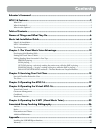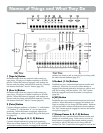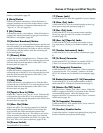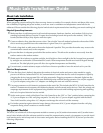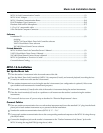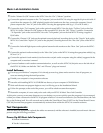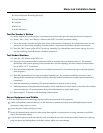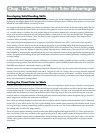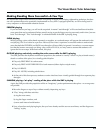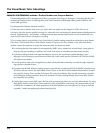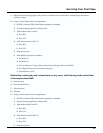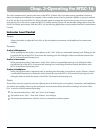
The Visual Music Tutor Advantage
13
Making Reading More Successful—A Few Tips
It is beyond the scope of this brief text to outline everything involved in developing sightreading technique, but here
are a few pointers that can be practically implemented in every MTLC-equipped piano lab, as well as being used in
every computer- or disk-assisted rehearsal session.
PREVIEW playing
If you look before you leap, you will not be surprised. A mental “read-through” will locate familiar and trouble-
some parts that can be understood before actually trying to get the fingers moving accurately and in time. Just one
brief “look through.” This “look through” is enhanced further if the SMF is playing along.
SLOW playing
Merely playing a piece, either hands separately or together, at a reduced tempo will prepare the students for the
real playing. This is as critical as a preview. However, the writer’s experience as a teacher and as a student indi-
cates that both the PREVIEW and SLOW run-throughs will most likely be ignored. As teachers, we must remem-
ber that the learners want only one thing—they want to PLAY! So, we may want to assume that students will
ignore the first two steps. With that in mind, let’s play!
OUTLINE playing—selectively reading the entire score while the SMF is playing
The SMF provides the rhythmic and musical propulsion; the student is visually “forced” to play selected notes (a
sketch or outline of the piece) in a visually guided rhythm
• Play only FIRST BEAT of each measure
•
Play only FIRST AND THIRD BEATS of each measure (either duple or triple meter)
• Play ALL BEATS
•
Play ALL NOTES, including subdivisions
• At the end of this short process, students or entire class have been visually guided through four separate play-
throughs
SHADOW playing—“air play” reading of the piece while the SMF is playing
Again, the SMF provides the propulsion while an “imaginary” perfect performance takes place—no wrong notes
are possible.
•
Move the fingers on top of keys without actually depressing any keys.
• “Play” along with these activities:
a) sing the note names,
b) sing the finger numbers, and
c) name each interval and direction
• Now, when the actual playing begins, the eyes have already read the score several times, and the fingers are
“itching” to play



